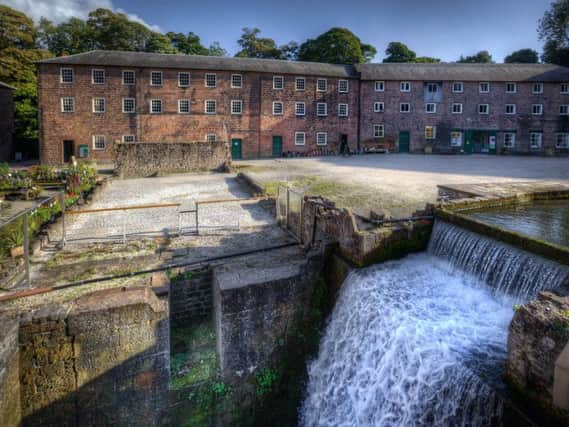Peak District cradle of industry heart of new tourism push


Cromford Mills is now the designated starting point for the whole Derwent Valley Mills World Heritage Site, celebrating how the beautiful countryside was once a major industrial hub.
This is the site that Sir Richard Arkwright chose to construct his very first water powered cotton spinning mill in 1771 and is truly the birthplace of the factory system!
Advertisement
Hide AdAdvertisement
Hide Ad

And who better to introduce his life and his legacy than the man himself?
The wonders of CGI technology will bring Sir Richard Arkwright back from the dead and provide the ‘wow’ factor at Cromford Mills.
It’s a fascinating place to visit as the mills themselves have been wonderfully preserved.
You get a real sense of history just walking around them and looking at how the water of the area was a key part of the technology used.
Advertisement
Hide AdAdvertisement
Hide Ad

The whole village was massively extended to house the workers, many of them children, and their families.
They were provided with homes, shops, pubs, chapels and a school.
Visitors can also see Sir Richard Arkwright’s showcase Masson Mills of 1783 at Matlock Bath, John Smedley’s Mill at Lea, the Cromford Canal, the High Peak Junction workshops and Leawood Pumphouse.
They form part of a 15-mile stretch of historical mill complexes and industrial landscape that snakes through the Derbyshire countryside to its southernmost attractions, the Derby Silk Mill and Joseph Wright Gallery.
Advertisement
Hide AdAdvertisement
Hide AdA new Gateway information hub is housed on the ground floor of the attraction’s new, four-storey Cromford Creative business centre.
Ground-breaking techniques were developed to clean the building of contaminants left over from its previous industrial use.
It is hoped the successful methods can be applied to other historic buildings blighted in a similar way.
The Gateway will allow visitors to find out exactly what there is to see and do at each of the 17 sites contained within the Derwent Valley Mills World Heritage Site and be the start of their journey of discovery.
Advertisement
Hide AdAdvertisement
Hide AdThe new attractions build on the site’s development as a successful heritage destination over the past 30 years – one that already attracts 100,000 visitors per year.
Cromford Mills offers interpretive exhibitions, tours, a busy events programme, attractive retail and catering and more.
Sarah McLeod, Cromford Mills chief executive, said: “We are working towards the Cromford Mills brand becoming a ‘jewel in the crown’ of tourism in the region.
“We are already an established destination but the coming months will begin to see the potential of this amazing site truly be realised.”
Advertisement
Hide AdAdvertisement
Hide AdCromford Mills is also set to increase the number and variety of events it organises and be a key part of the overall Derbyshire experience.
Jo Dilley, destination management organisation director, said: “This really is a groundbreaking moment for tourism in the region.
“The potential of Cromford Mills has never been questioned.
“To see it become a reality and act as the focal point for the northern end of the region’s only World Heritage Site is fantastic and adds another key attraction to the area’s enviable line-up.”
Advertisement
Hide AdAdvertisement
Hide AdMajor funding partners for the project to transform the Gateway building, which had been on Historic England’s at-risk register, include a Heritage Lottery Fund grant of £4 million and a loan of £450,000 by the Architectural Heritage Fund.
Other charitable donors include The Monument Trust, AIM Biffa Award, The Garfield Weston Foundation, J P Getty Jr Charitable Trust, Headley Trust, Sylvia Waddilove Foundation, and The Wolfson Foundation.
More information: www.cromfordmills.org.uk. Facebook: www.facebook.com/CromfordMills